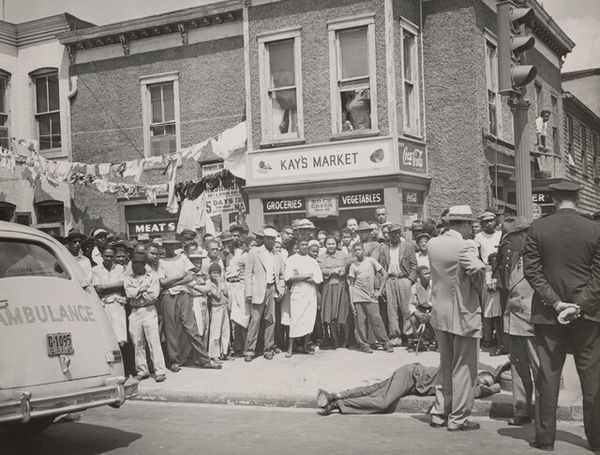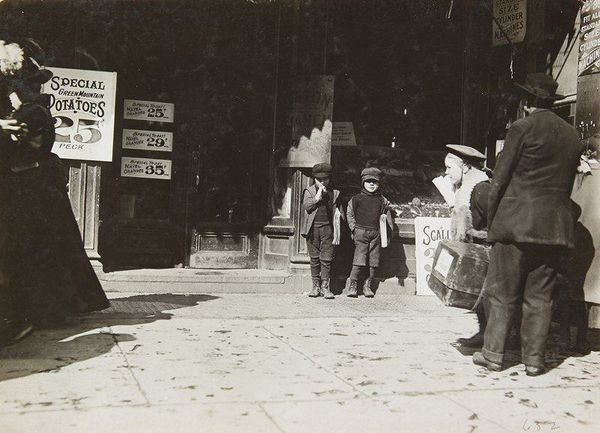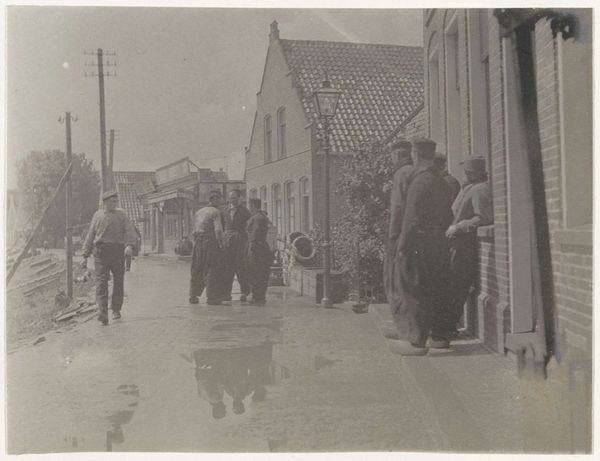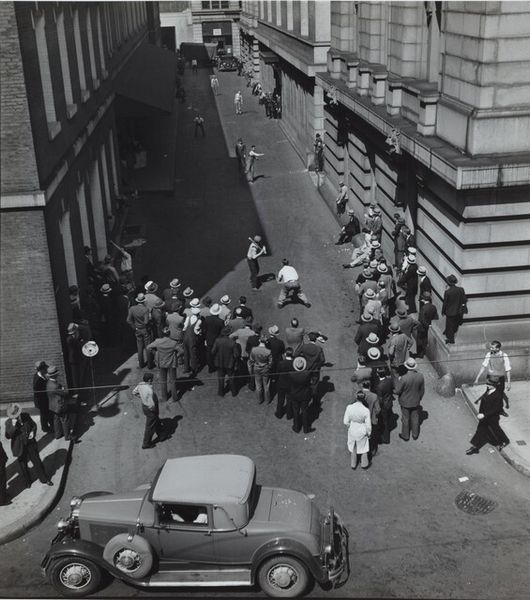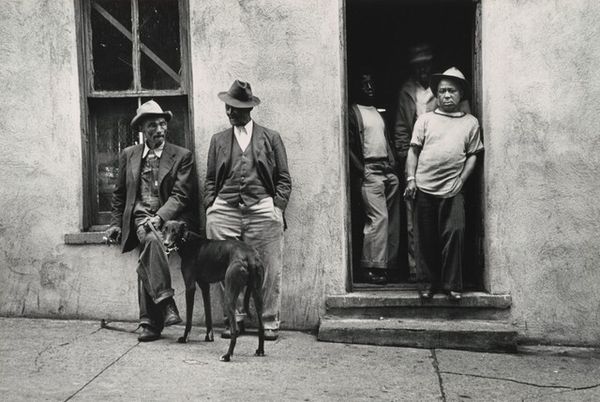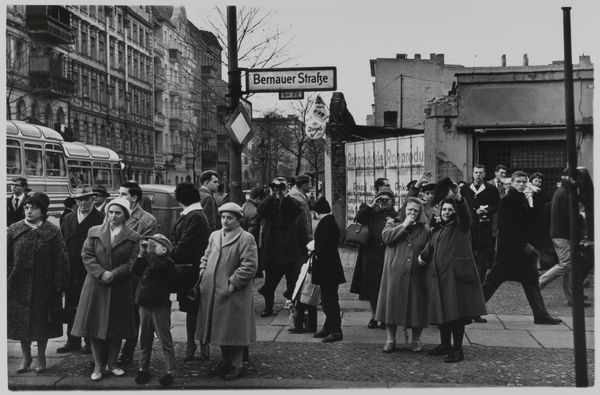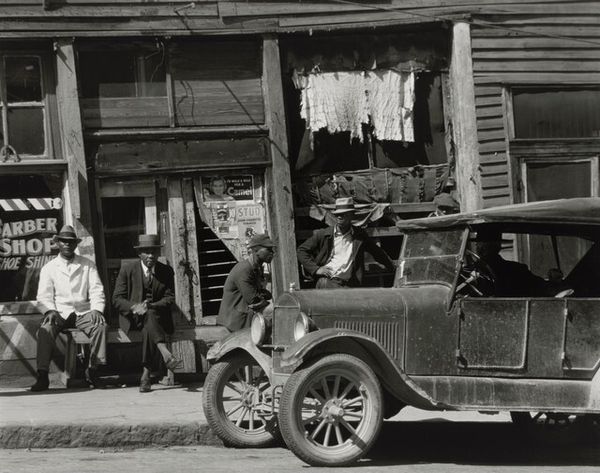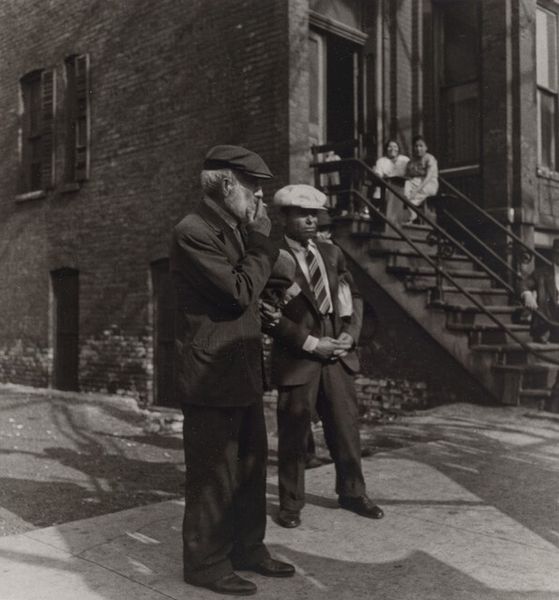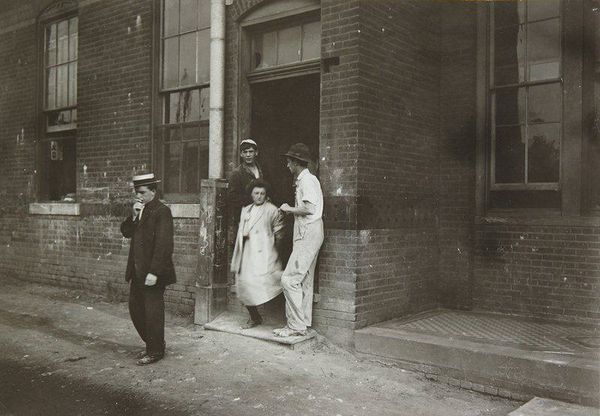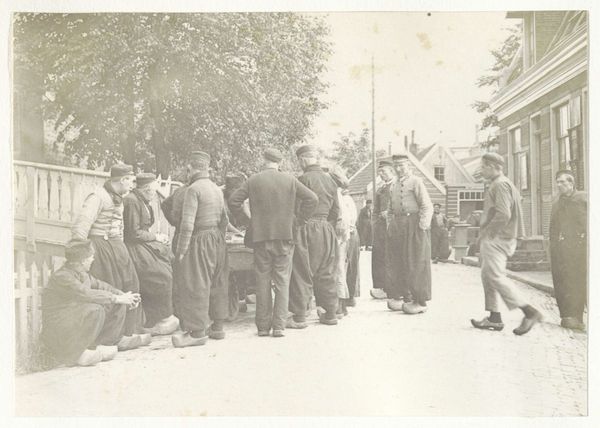
Residents, of Japanese ancestry, appearing at the Civil control station for registration in response to the Army's exclusion order No. 20—The evacuees will be housed in War relocation authority centers for the duration, San Francisco, California 1942
0:00
0:00
photography
#
portrait
#
street shot
#
social-realism
#
street-photography
#
photography
#
historical photography
#
street photography
#
realism
Dimensions: image: 23.9 × 19 cm (9 7/16 × 7 1/2 in.) sheet: 25 × 20.1 cm (9 13/16 × 7 15/16 in.)
Copyright: National Gallery of Art: CC0 1.0
Curator: This photograph by Dorothea Lange, taken in 1942, captures a stark scene in San Francisco, California. It's titled "Residents, of Japanese ancestry, appearing at the Civil control station for registration in response to the Army's exclusion order No. 20." Editor: My initial reaction is one of profound stillness despite the palpable tension. The greyscale lends a historical distance, yet the queue feels unending, ominous. Curator: Precisely. The photograph’s formal composition contributes to that feeling. Lange positions the viewer high, looking down upon a line of people, mostly men, snaking down the street. The repetition of figures, framed by the architecture, creates a visual rhythm. Editor: Symbolically, the line is the heart of it, isn’t it? Lines are borders. This visual representation of waiting implies the surrender of autonomy, of personhood. They stand in the shadow of ornate American architecture, representing inclusion for some and exclusion for others. Curator: Note the tonal range. The dark suits contrast sharply with the white building façade. It accentuates the density of the group while directing our gaze to the implied entrance where people enter as private citizens, but will soon leave as part of a processed demographic. Editor: The gaze is very interesting here, particularly in those nearest the camera. Few meet Lange's lens. Most stare forward. They betray a potent mixture of fear and forced compliance. Curator: Absolutely, and that compliance speaks volumes about the psychological power structures at play. Lange worked for the War Relocation Authority, and later released photos that she knew wouldn't be used precisely because they depicted the unjust nature of the internment. Editor: And that single soldier present at the entrance. His uniform silently attests to authority. The repetition of hats suggests an attempt to diminish the individuals, who collectively embody a cultural identity reduced to its racial origin. It strips people of their histories and replaces them with statistics. Curator: The photograph then functions on multiple levels. Formally, it is a study of line, tone, and composition. Yet, its symbolic power resides in its ability to convey the human cost of racial prejudice during a dark period in American history. Editor: Reflecting on it now, Lange masterfully captured how visual rhetoric could turn prejudice into tangible policy, all in one patiently enduring, snaking line. Curator: Indeed. The photograph is an examination of social organization but even more importantly, of what that organization truly implies for individuals in an unsettled and hostile world.
Comments
No comments
Be the first to comment and join the conversation on the ultimate creative platform.


